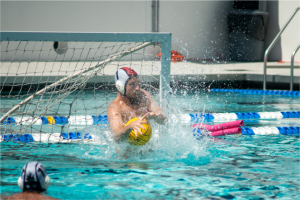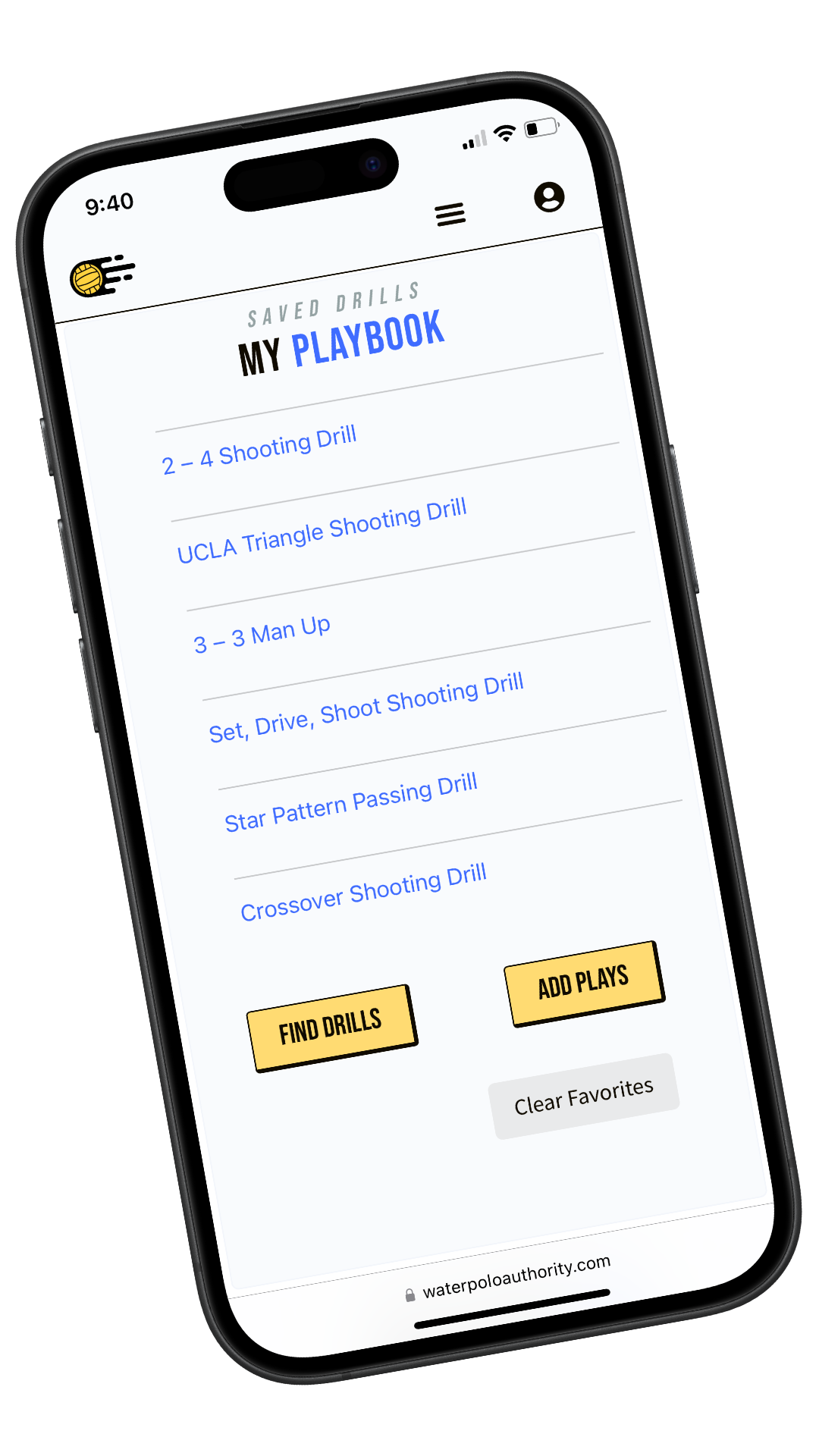Great passing in water polo starts with strong legs and good ball-handling skills. Players must be able to make many different types of passes in a game depending on the situation. Dry passes, wet passes, passes after a fake, or even offhand passes should be skills that all players develop.
Keep these 5 tips in mind when passing:
- Keep your elbow out of the water up level with your ear
- Point your opposite shoulder in the direction you plan on throwing
- Rotate your shoulders when throwing and engage your core
- Use your legs and speed up your eggbeater to get up higher
- Pass with intensity, don’t build bad habits by being lazy when passing
In addition to these tips, players should work on both vertical and horizontal passing. While passing from a vertical position, players can practice faking and keeping the ball held high. In horizontal passing, players should focus on protecting the ball by keeping it in front of them.
Depending on the game situation players will need to make a dry or wet pass. Players can try these types of passes in nearly all of the passing drills listed below. Check out the glossary to better understand water polo terminology.
Lastly, players should work on picking the ball up from underneath and on top. Newer players will have an easier time picking the ball from underneath, while more advanced players will prefer to pick the ball up from on top. Both are valuable skills to work.
Try these passing drills and techniques at your next practice.
Water Polo Passing Drills
- Strong side and cross face passing: pass in a clockwise direction and then switch it up and pass counter clockwise so that players are catching the ball across their body.
- Hand transfer: catch the ball with your dominant hand make a smooth transfer to your offhand to pass, then reverse direction and catch with your offhand and pass with your dominant hand.
- Push passes: best in groups of 2, players should be horizontal when making push passes as if they were swimming.
- Upslide and pass: this is a higher intensity drill where players catch the ball and upslide by treading up with the ball, make a lateral movement, and finally tread up again to make a pass. Practice upsliding in different directions.
- Elevator faking and pass: players should catch the ball simultaneously tread higher and higher with each fake before making a pass at the highest point.
- Wet passes: pass the ball so that it lands on the water next to your teammate, like a set pass. Players receiving the ball can reach a hand out to indicate where they want the ball to land.
- Pause passing: players receive the ball, pause for 5 seconds while treading high up out of the water, and then make a pass
- Wrist passing: great for warming up in pairs, players get relatively close together and only use their wrists to pass. Alternate hands to warm up both arms.
- Snake eyes passing: best in groups of 4 or 5, players pass randomly to each other in the circle working on releasing the ball at different points (above your head, side arm, wrist pass, tip pass, etc.). Forces all members of group to be ready to receive a pass.
- Alley way pass/shoot: players get in groups of 3. Player 1 passes to player 2 who then shoots it off the pass directly at player 3. The rotation then continues with one player passing, the next shooting off the pass, and the third player blocking. Check out the GIF drill for a visual example.
- Long passes: best in small groups or pairs. Players continually get further and further apart while passing.
- Skip passes: try and pass to each other by throwing the ball so that it skips off the water.
- Tips: get in a small group of 3 of 4 players and stay close together in a circle. Keep the ball moving between players by treading up as high as you can and tipping or redirecting the ball to the next player.
- Keep away: similar to the ‘Tips’ drill, but add a defensive player in the center of the group who tries to steal the ball or intercept bad passes
- Multi-ball passing: works great in groups of 5. Add a second ball to your passing rotation so players get more passing reps in and are focused on making a good pass and then instantly receiving a pass.
What equipment can help improve my passing?
- Worn out water polo ball with little to no grip to work on catching and passing
- Full size or mini weighted ball to work on shoulder strength
- Rebounder net for when you don’t have a partner or want to get maximum repetitions
- Elastic bands for stretching your shoulders and practicing the throwing motion




